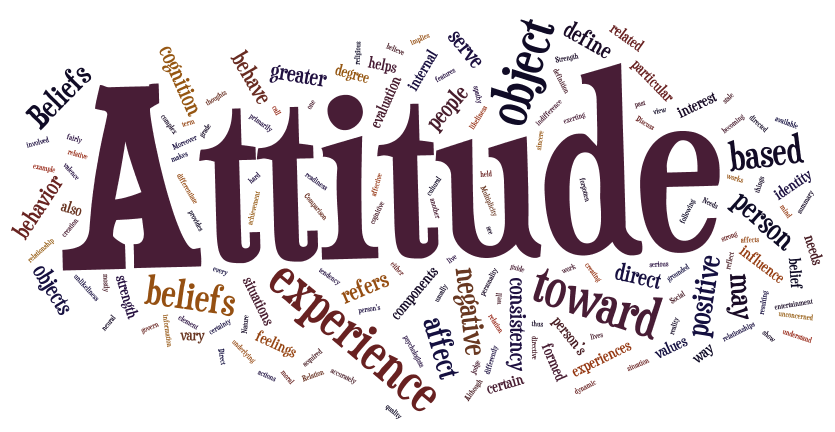Structure and Function of Attitude
An attitude is made up of four interconnected components: cognitions, evaluative responses, behavioural intentions, and behaviors. An attitude is really a summary of an attitude structure, which consists of these interconnected components. Thus, the attitude comprises a series of interrelated thoughts, feelings, and intentions. A change in one component of an attitude structure might very well lead to changes in the others because an attitude structure is dynamic, with each component influencing the others.
Cognitive Structure
An attitude includes an object label, rules and a set of knowledge structures associated with that label. Whether particular beliefs are true or false is hard to prove.
Evaluative structure
An attitude also has an evaluative or affective component. Stronger positive and negative emotions can be felt and it includes feelings like dislike, hatred, happiness and love. Since the evaluative component has both a direction (positive or negative) and intensity it distinguishes an attitude from other types of cognitive elements.
Behavioural Predisposition
An attitude involves a predisposition respond or a behavioural tendency toward the object. “It’s boring” implies a tendency to avoid the class. “I like my job” suggests an intention to go to work. People having specific attitude are inclined to behave in certain ways that are consistent with that attitude.
Cognitive, evaluative, and behavioural components have the same object. However, they are distinct; each component can be measured and the relationships among them should be noted. In a survey of women’s attitudes toward contraceptives, for example, found that beliefs, feelings, and actions are both distinct and somewhat related.
The degree of consistency between components is related to other characteristics of the attitude. Greater consistency between the cognitive and evaluative components is associated with greater attitude stability and resistance to persuasion. Greater consistency is also associated with a stronger relationship between attitude and behavior.
Functions of attitude
Altitudes serve several important functions.
They define us. It gives an up-front statement about which we really are or would like others to think who we are.
- Attitudes direct our future feelings and thoughts about the objects of those feelings and thoughts. Attitudes are cognitive structures that guide perception and help us fill the gaps when information is lacking.
- Attitudes summarize our feelings, thoughts, intentions, and behavior and it helps us to respond.
- Attitudes lead us to value objects that help us reach our goals is utilitarian.
- Altitudes serve a helps us to make sense out of the world by categorizing objects and people is knowledge function.
- Stereotypes are often associated with intense emotions which can sometimes lead to intergroup conflict.
- As a value-expressive function it helps in expressing our values, attitudes.
- Attitudes serve an ego-defensive function when they protect us against our fears and anxieties.
- Heuristic Function: We develop favourable attitude towards an attitude that aids or rewards us and unfavourable attitude towards that punishes or thwarts us. It provides a simple and efficient way of evaluating objects.
- Attitude maintains self-worth and defines the self and they express individual’s basic values and reinforce his/her self- image.
Finally some attitudes protect the person from recognising certain thoughts and feelings that threaten his self-image or adjustment.


